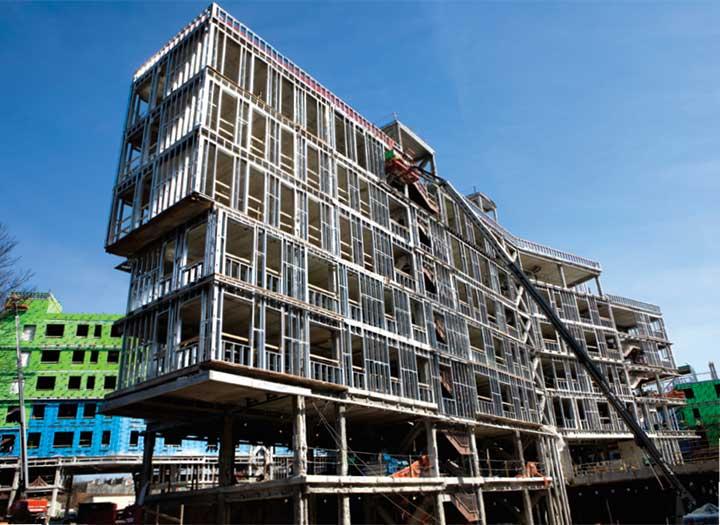
Our goal during the pandemic has been not only to navigate through it successfully but to emerge stronger than before. Two new residential colleges rising south of Poe Field exemplify that commitment to the future.
On a brisk weekend in early March, I walked by the site to see the progress on Perelman College and what we are temporarily calling “College 8.” Despite the pandemic, the buildings are taking shape rapidly and impressively. We expect that they will open less than two years from now, in fall 2022.
The two new colleges will add 1,000 undergraduate beds to our housing inventory. We will use 500 of those beds to expand the student body by 125 places per year.
The other 500 beds will allow us to close, replace, or renovate existing housing, beginning with the construction of Hobson College on the site of the current First College (formerly Wilson College). In the short term, the additional beds may also help us to manage the bulge in students who deferred their studies this year.
The expansion will permit Princeton to say “yes” to more of the spectacularly qualified applicants who seek admission to the University each year. As you know, getting into Princeton and its peers has become shockingly difficult. Last year, we had nearly 33,000 applicants, and the admit rate was under 6%.
I recently asked Karen Richardson, our dean of admission, how many of these applicants were roughly as good as those we admitted. “18,000,” she said. We make around 1800 offers to fill the 1300 spots in each entering class. You can do the math: we say “no” to about 90% of the students fully qualified for the rigorous academic curriculum at Princeton.
I love the students we bring to our campus. They are wonderful. But I also know that many students whom we turn down would thrive at Princeton, contribute positively to our campus, and, eventually, make a difference in the world.
The opportunity to attend and graduate from Princeton would be life-changing for many of these students. That is why I felt from the moment I took office that if we could expand while preserving the essential character of the Princeton experience, we had a moral obligation to do so.
The case for expansion has become even more urgent in the intervening years. The applicant pool has continued to grow. And while the COVID-19 crisis has shown us what we can do online, it has also revealed how much we lose without the residential experience. Even during this pandemic, students want to be here, at Old Nassau, amid the transformative opportunities and personal connections that our campus offers.
The new colleges will also allow Princeton to continue its efforts to draw talent from every sector of society. I am proud that the percentage of first-generation and low-income Princetonians has risen substantially over the past decade.
By comparison to other private selective colleges and universities, Princeton has gone from being a laggard to a leader in the percentage of its students receiving federal Pell grants, which benefit mainly families in the lower 40% of the American income distribution. We have also reinstituted a transfer program, enabling us to take community college transfers and more military veterans.
As we expand, we have the opportunity to attract and admit more students from low-income backgrounds and also from the broad range of middle-income families who benefit from Princeton’s generous financial aid programs.
I said earlier that we had a duty to grow our student body if we could do so while preserving the essentials of the Princeton experience. Small classes, independent research opportunities, and personal mentorship are essential to Princeton’s educational program.
Because we have added faculty slots gradually over time, we already have much of the teaching capacity needed to extend that educational program to another 500 students. Provost Deborah Prentice and Dean Jill Dolan are working with academic departments to address other needs related to expansion.
We are also building new, larger facilities for University Health Services, and we have plans to expand and improve our recreational facilities, including at Dillon Gymnasium. One of my highest priorities is to raise the additional financial aid and scholarship resources required to support the expanded classes.
I returned from my recent walk down to Poe Field invigorated by a sense of multiple new beginnings: the advent of spring, the promising impact of vaccination on the pandemic, and the approaching completion of our new colleges. I eagerly anticipate welcoming the Class of 2025 this August to what I hope will be a much more normal year — and to greeting an expanded Class of 2026 the following August.
